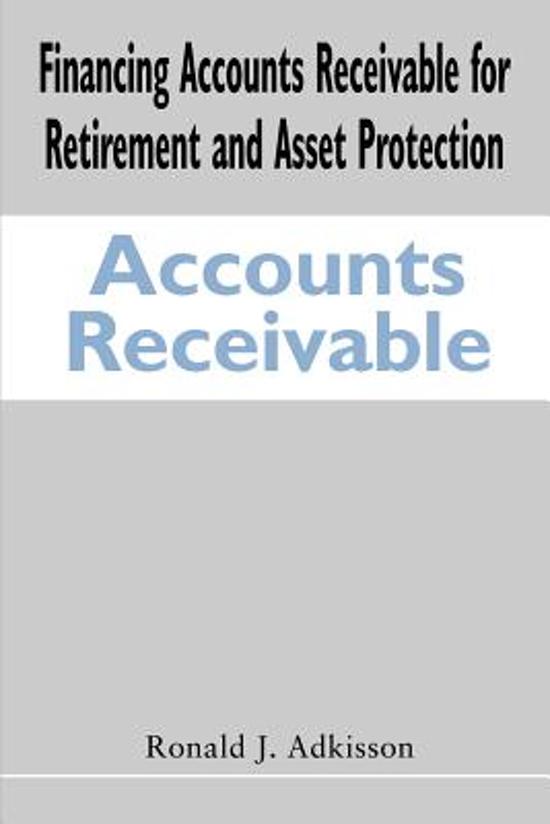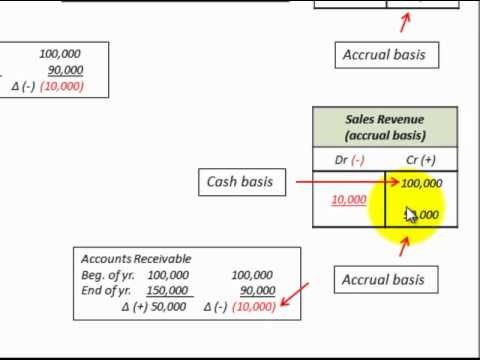Credit Balance in Purchases Ledger?

Purchase ledgers let organisations track and manage their debts and ‘accounts payable’ effectively. A properly maintained purchase ledger enables the recording and monitoring of supplier invoices, payments and outstanding balances. This bookkeeping course teaches you how to streamline financial processes, enhance accuracy and provide valuable insights for better cash flow management and budgeting. We lay out the benefits of the purchase ledger and the purchase ledger account, which keeps precise transaction records with individual suppliers.
According to Accounting Tools, you can make entries directly into the general ledger, but good accounting practice is to record them first in a journal or day book, also called a book of original entry. The purpose of the day book is to list individual invoices, credits, payments and receipts by date, customer or supplier name, reference, type of sale or supply and amount. In a manual accounting system the ledger clerk posts periodic, usually monthly, summary totals from the day book to the general ledger. In computerized systems, the general ledger posting is made automatically as each transaction is entered. • Information comprised in sales ledger and purchase ledger helps to reconcile the creditors and debtors status with the balance of respective control accounts. A supplier may issue a credit for faulty or damaged goods or for incomplete deliveries.
Recording Purchase Credits
Consider which debit account each transaction impacts and whether it ultimately increases or decreases that account. Finally, calculate the balance for each account and update the balance sheet. They must also ensure that the amount listed in the control account is the total of each of the amounts owed by a business to each supplier. The practise of ensuring that the amount in the control accounts and the amounts in the general ledger match is known as ‘reconciliation’.
- We equip you with the skills and knowledge required to use the purchase ledger to effectively manage purchase transactions, maintain accurate financial records and make informed financial decisions.
- The purpose of the purchase ledger is to provide a detailed record of each purchase transaction, including information such as invoice numbers, dates, amounts, terms, and details of payments made.
- The following information was extracted from the books of William Noel for the year ended 30 April 2001.
- The purchase ledger is also known as the purchase subledger or purchase subaccount.
- The total of the balances in Noel’s purchases ledger amounts to Rs , which does not agree with the closing balance in the Control account.
Let’s consider a simplified example of how a purchase ledger might work for a small business, XYZ Coffee Shop. Third, the opposite holds true for liability, revenue, and equity accounts. The mnemonic for remembering this relationship is G.I.R.L.S. Accounts which cause an increase are Gains, Income, Revenues, Liabilities, and Stockholders’ equity. The purchase ledger is also known as the purchase subledger or purchase subaccount.
Having separate ledgers makes it easier to see how much is owed to or by each business with which the company trades. The purchase ledger is part of the accounting department’s database; it is not maintained by the purchasing department. The ledger is useful for segregating into one location a record of the amounts a company spends with its suppliers. The purchase How to balance purchase ledger ledger shows which purchases have been paid for and which purchases remain outstanding. A typical transaction entered into the purchase ledger will record an account payable, followed at a later date by a payment transaction that eliminates the account payable. Thus, there is likely to be an outstanding account payable balance in the ledger at any time.
This bookkeeping course is best suited for accounting professionals, buying officers, small business owners and anyone involved in financial management, procurement or bookkeeping. We equip you with the skills and knowledge required to use the purchase ledger to effectively manage purchase transactions, maintain accurate financial records and make informed financial decisions. Purchase ledgers play a key role in tightening financial management in an organisation so sign up to add this bookkeeping skill to your portfolio. In order to prepare a trial balance, we first need to complete or ‘balance off ’ the ledger accounts. Then we produce the trial balance by listing each closing balance from the ledger accounts as either a debit or a credit balance.
purchase ledger
To successfully complete this course and become an Alison Graduate, you need to achieve 80% or higher in each course assessment. Once you have completed this course, you have the option to acquire an official Diploma, which is a great way to share your achievement with the world. Enrol and complete the course for a free statement of participation or digital badge if available. Anyone can learn for free on OpenLearn, but signing-up will give you access to your personal learning profile and record of achievements that you earn while you study. Isobel Phillips has been writing technical documentation, marketing and educational resources since 1980.
- Instead, this information is recorded directly within the general ledger.
- Anyone can learn for free on OpenLearn, but signing-up will give you access to your personal learning profile and record of achievements that you earn while you study.
- Sales ledger that falls under the system of accounts, always records all credit sales transactions of a particular organization.
Before you can enter your Opening Purchase Ledger Balances your suppliers
will have to be created within PMS services ensuring that you have ticked
“Purchase ledger” on the Service Details tab. Designed for freelancers and small business owners, Debitoor invoicing software makes it quick and easy to issue professional invoices and manage your business finances. Many online software options today designed for small businesses and those just starting out do not include these extra accounts as they can cause undue complications in managing the financial accounts of a small business. If the purchasing volume is relatively low, then there is no need for a purchase ledger. Instead, this information is recorded directly within the general ledger. Making a list of the above balances brought down produces a trial balance as follows.
6 Balancing off accounts and preparing a trial balance
The course traces the relationship between sales ledgers and purchase ledgers. The purchase ledger control account, or trade creditor control account, is part of the balance sheet and shows at any given time how much you owe to your suppliers. All of the individual transactions posted to your supplier ledger are included in this account, so any invoices, credit notes and payments are recorded. A trial balance is a list of all the balances in the nominal ledger accounts. It serves as a check to ensure that for every transaction, a debit recorded in one ledger account has been matched with a credit in another. If the double entry has been carried out, the total of the debit balances should always equal the total of the credit balances.

When you have finished, check that credits equal debits in order to ensure the books are balanced. Another way to ensure that the books are balanced is to create a trial balance. This means listing all accounts in the ledger and balances of each debit and credit. Once the balances are calculated for both the debits and the credits, the two should match. If the figures are not the same, something has been missed or miscalculated and the books are not balanced.
Create your free OpenLearn profile
She also writes on personal development for the website UnleashYourGrowth. Phillips is a qualified accountant, has lectured in accounting, math, English and information technology and holds a Bachelor of Arts honors degree in English from the University of Leeds. It’s easy to track your expenses from anywhere with online invoicing software like Debitoor. SULAIMON AND CO has developed a strong professional team capable of delivering integrated consultancy services in management and finance to private, public and NGO’s sectors. OpenLearn works with other organisations by providing free courses and resources that support our mission of opening up educational opportunities to more people in more places.
A debit without its corresponding credit is called a dangling debit. This may happen when a debit entry is entered on the credit side or when a company is acquired but that transaction is not recorded. Similarly, a credit ticket may be entered into the general ledger when a deposit is made, but it needs an offsetting debit ticket, either at the same time or soon after, to balance the books. • Detailed information enclosed in these two types of ledgers are summarized at the end of a particular period (often monthly) and records in respective control accounts through general ledger. • Both sales and purchase ledgers are considered as an internal database, usually maintained by the accounting department. A) Extract the relevant information from above and prepare the sales ledger control account for the month ended 31 May 2003.
In addition, post the total of $500 to the supplier’s account in the subsidiary purchase ledger. The general ledger is also known as the main or nominal ledger, because it holds both sides of double-entry transactions. In contrast, the purchase and sales ledgers are called subsidiary ledgers because they’re not part of the double-entry system. Whereas the general ledger holds “general” accounts, such as sales, ledger account purchases, fixed assets and bank accounts, the subsidiary ledgers record the company’s transactions with individual suppliers or customers.
Examples of purchase ledger
Accounting software such as QuickBooks, FreshBooks, and Xero are useful for balancing books since such programs automatically mark any areas in which a corresponding credit or debit is missing. Explain why it is useful to maintain a control account in respect of both trade receivables and trade payables. The books of Mary Rose gave the following information for the month ended 31 May 2003. Add purchase ledger to one of your lists below, or create a new one. • Sales ledger is also known as the sales sub-ledger while purchase ledger is also known as the purchases sub-ledger. For an outstanding
Purchase ledger Invoice this will need to be a debit entry and
it will create the entry in the Purchase ledger Control account.
B) Prepare an amended sales ledger control account, extracting the relevant information from the list of errors given above. The following errors have been discovered since the sales ledger control account was prepared. The purchase ledger helps XYZ Coffee Shop track each transaction with their suppliers, ensure they are paying their invoices on time, and monitor any discounts received. The total amount owed to suppliers at any given time, as shown by the purchase ledger, should equal the balance on the accounts payable account shown in the general ledger.
